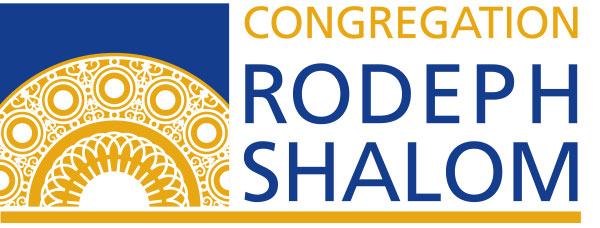Is Judaism an ethnicity? A faith? A family? A few years ago, Rabbi Lawrence Hoffman visited as our scholar and guide for our congregation’s vision. He taught us that modern Jewish life has experienced immigrations, the additions of majors groups that bring a new voice and have an impact of Judaism. Immigrations include women in leadership, interfaith families and Jews by choice. Such immigrations and the transformations they bring are powerful reminders that Judaism is not a race and can no longer truly be understood as an ethnicity. Judaism is a spiritual path that, unlike ethnicity, can be joined. And Jews are and have always come from many different ethnicities.
If Judaism cannot be reduced to ethnicity, we must demand more of our Judaism and more of ourselves, in our spiritual paths. The spiritual path and Torah’s unique lens to the journey, is the Judaism of today and of tomorrow. Rabbi Hoffman’s challenging and inspiring charge came to life visually in the new exhibit at Rodeph Shalom’s Philadelphia Museum of Jewish Art. At the recent Art Opening of “Mis/Constructed Identities: Exploring Jewish Stereotypes,” RS curator Matthew Singer engaged in a fascinating dialogue with the artist Leslie Friedman. In Leslie’s installation, she uncovers anxieties of Judaism buried in the past for American Jews. These anxieties are expressed in the of layers of images of Jewish stereotypes.
What is so interesting about Leslie’s images is the range of perception. At the top, she illustrates stereotypes that we might consider positive or cause for pride: intelligence, humor, skill with finance. Toward the bottom she graphically delves into stereotypes that are negative, even violent, recalling the stories of blood libels in Europe. The extreme range of stereotypes is a powerful reminder that all stereotypes, even the positive ones, are just that, stereotypes.
Leslie explained that she intends this installation to make a statement about identity politics in relationship to all different groups. Her focus is Judaism because that is her group and her language, and where she feels most license. Yet, the statement goes beyond her particular religion into all group.
Leslie and Matt considered the assertion that race is a social construct: there is no inherent reason why one’s skin color or facial features defines one’s talent or character. Race is an imposition, they suggested, and does not need to define who we are.
So, if Judaism is not a race and does not need to define our talent or character, we are faced with Rabbi Hoffman’s challenge: What is Judaism? Judaism is a spiritual path guided through the wisdom and purpose of Torah. It is this fundamental message that helped us to define our congregational vision, to create profound connections. Many thanks to Matt and Leslie, for brilliantly sparking a meaningful conversation. May this latest art exhibit ignite our creativity, that through these constructions we might see beyond the constructs of race. And may we deepen our connections with the true purpose of Jewish life: God, Torah and the community.
